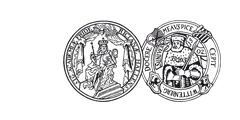Current Research Projects
- 1. Effect of drought and endophyte infection on plant physiology of Lolium perenne
- 2. Synthesis of bioprotective metabolites in N.lolii/L.perenne associations under conditions of water deficit
- 3. Metabolic response of endophyte-free and endophyte-infected perennial ryegrass on drought
- 4. Occurrence and diversity of endophytes in Bulgarian grass ecotypes

1. Effect of drought and endophyte infection on plant physiology of Lolium perenne
Symbiosis between perennial ryegrass (Lolium perenne) and its endophyte Neotyphodium lolii is generally described as a mutualistic relationship. We assume that the grass plant profit from endophyte colonization especially under abiotic stress conditions, and hypothesize that N. lolii confer physiological protection to its host plant under conditions of water deficit.
To test this hypothesis, we carried out a drought stress experiment using genetically identical endophyte-infected and endophyte-free clones of perennial ryegrass from a natural and a synthetic association. Under controlled environmental conditions plants were subjected to increasing levels of drought stress and eventually rewatered. We showed that the endophyte N. lolii had minor effects on morphological responses as leaf elongation rate and aboveground biomass production. However, there were significant endophyte effects on physiological traits as cumulative water uptake, relative water content, osmotic potential and osmotic adjustment as well as proline content. Advantages for endophyte-infected clones occurred in most cases not before severe drought stress was imposed. The effects were most marked in the natural association.
This study is a joint project in co-operation with IMBS (Barry Scott ) and AgResearch . It was financially supported by the German Academy of Sciences Leopoldina .
For more details see:
Effect of water deficit on physiology and alkaloid biosynthesis of Neotyphodium-infected perennial ryegrass.
Hahn, H., Monahan, B.J., Young, C.A., McManus, M.T., Scott, D.B.
5th International Symposium on Neotyphodium/Grass Interactions, May 23-26, 2004, Fayetteville, Arkansas, USA
Poster IMBS Endo-symposium Arkansas 2004.pdf
(158.7 KB) vom 26.02.2008
-
Neotyphodium fungal endophytes confer physiological protection to perennial ryegrass subjected to a water deficit.
Hahn, H., McManus, M.T., Warnstorff, K., Monahan, B.J., Young, C.A., Davies, E., Tapper, B., Scott, B.
Env. Exp. Bot. 2008 (In Press)

2. Synthesis of bioprotective metabolites in N. lolii/L. perenne associations under conditions of water deficit
New Zealand farmers observed that severe problems with endophyte toxicosis (ryegrass staggers) often occur in summer and autumn, in particular after a serious drought period. We expect that concentrations of symbiosis-specific alkaloids which are toxic to livestock rise with increasing water deficit. Therefore we claim that expression of endophyte genes required for the biosynthesis of these alkaloids is upregulated when the host plant is subjected to drought stress.
To verify the observation of the farmers we investigated alkaloid levels in a natural and a synthetic association of N. lolii/L. perenne when grown under drought stress. With increasing water deficit changes in alkaloid contents occurred in both associations. Ergovaline levels in pseudostem tissue increased in response to increasing water stress for both associations but lolitrem B levels only increased in the natural association. But, our hypothesis that water stress would lead to an increase in expression of endophyte specific alkaloid genes in the plant was not supported. However, we analysed just a single gene from the ergot alkaloid (lpsA) and indole-diterpene (ltmG) biosynthetic pathways were analysed. Furthermore, the semi-quantitative methods used would not distinguish between small changes in steady state levels of transcript against a high background level of in planta expression.
This study is a joint project in co-operation with IMBS (Barry Scott ) and AgResearch . It was financially supported by the German Academy of Sciences Leopoldina.
For more details see:
Does water deficit affect the synthesis of bioprotective metabolites in the Neotyphodium lolii/Lolium perenne symbiotic association?
Hahn, H., Davies, E., Tapper, B., McManus, M.T., Scott, D.B.
3rd International Symposium Molecular Breeding of Forage and Turf, May, 18-23, 2003, Dallas, Texas, USA
Poster Hahn et al MBFT Dallas.pdf
(93 KB) vom 26.02.2008
-
Neotyphodium fungal endophytes confer physiological protection to perennial ryegrass subjected to a water deficit.
Hahn, H., McManus, M.T., Warnstorff, K., Monahan, B.J., Young, C.A., Davies, E., Tapper, B., Scott, B.
Env. Exp. Bot. 2008 (In Press)

3. Metabolic response of endophyte-free and endophyte-infected perennial ryegrass on drought
Due to the synthesis of bioprotective alkaloids in endophyte/grass associations, there are well known differences between endophyte-infected and endophyte-free L. perenne. However, response to drought stress is a complex process of multigenic nature and only little is known about the whole-system response of biochemical reactions. As various studies show that grass endophytes can modify the response of the plant to environmental stresses, we assume that also water deficit induce changes in the metabolic pathway of the host plant.
Metabolomics is a useful approach to reflect the dynamic response of metabolic networks to environmental changes. The aim of our work is to use metabolic profiling to get insight in the response of Lolium perenne - with and without endophytes - on drought stress. Activities in this field involve studies on the metabolic response of endophyte-infected and endophyte-free L. perenne grown with and without water stress.
This study is a joint project in co-operation with IMBS (Barry Scott ), O. Fiehn , UC Davis Genome Center, and J. Kopka , Max-Planck-Institut für Molekulare Pflanzenphysiologie Potsdam-Golm.
Previous results see:
Metabolic profiling of endophyte-infected and endophyte-free ryegrass grown under sufficient water supply and drought.
Hahn, H., Fiehn, O., McManus, M.T., Scott, D.B.
6th International Symposium on Fungal Endophytes of Grasses. March 25-28, 2006, Christchurch, New Zealand
Poster Endosymp Christchurch 2007 Metabolomics.pdf
(6.2 MB) vom 26.02.2008

4. Occurrence and diversity of endophytes in Bulgarian grass ecotypes
As endophytes may induce a range of advantages for its host plants it is expected that grasses preferentially are colonized with endophytes when they are growing under marginal conditions and environmental stress. Genotypes of genebank collections are often collected on such habitats with less favourable conditions for plant growth. Therefore we assume a high incidence of endophyte infection in accessions of a genebank when they originate from collection trips. Furthermore, we expect a range of variability within isolates of endophytes from a certain host grass species.
Seed and plant material of different grass species that were collected during a collection trip of the German genebank to Bulgaria was investigated according endophyte infection. Endophytes were detected in wild populations of 9 genera (Agrostis, Alopecurus, Bromus, Deschampsia, Holcus, Lolium, Phleum, Poa, and Pucinella) from 67 Bulgarian habitats. Very high infection rates were found for Lolium perenne. Endophyte-infected seeds of Lolium perenne, Bromus spp. and Phleum spp. were found more frequently on dry sites than on wet sites. For accessions of Lolium perenne, isolates show remarkable variability in the morphology of their colonies and growth rates as well as in the content of the alkaloids lolitrem B, ergovaline and peramine.
This study is a joint project in co-operation with the genebank of IPK Gatersleben (E. Willner), K. Andreeva (Kentucky State University) and AgResearch (D. Hume, B. Tapper).
For more details see:
Fungal endophytes in grass speciees in Bulgaria and infection levels in relation to altitude and water supply of their habitats.
Hahn, H., Andreeva, K., Willner, E., Diepenbrock, W.
5th International Symposium on Neotyphodium/Grass Interactions, May 23-26, 2004, Fayetteville, Arkansas, USA
Poster BGL Endo-symposium Arkansas 2004.pdf
(102.5 KB) vom 26.02.2008
Occurrence and characterization of Neotyphodium endophytes in Bulgarian population of Lolium perenne.
Hahn, H., Andreeva, K., Willner, E.
XXVIIth Eucarpia Symposium on improvement of fodder crops and amenity grasses, August 19-23, 2007, Copenhagen, Denmark
Poster Copenhagen Eucarpia 2008.pdf
(64.2 KB) vom 26.02.2008




